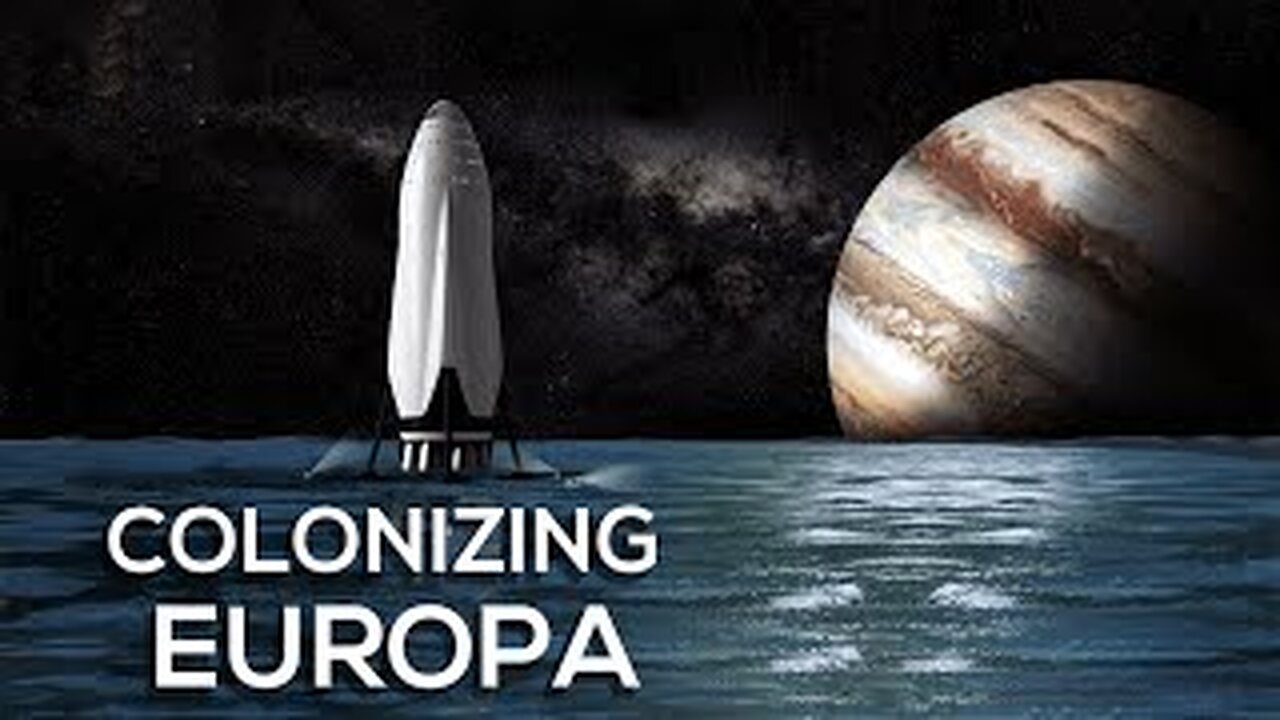Premium Only Content

Colonizing Europa (Jupiter's Moon)...
💕 Thanks for watching my video 💕
At the end of the 19th century it was possible to estimate for Europa a diameter of about 3100 km, comparable to that of our Moon. It was therefore legitimate to think that it was a very similar body, arid and very craterized. It was only in the '60s, thanks to the first spectroscopic studies, that it was suspected that its surface was instead covered with ice.
Then the final word went to interplanetary probes and the first missions to the outer planets of the Solar System.
It was Voyager 1, in March 1979, to photograph for the first time closely the Galilean satellites, in particular Io, Ganymede and Callisto; while Europa (which was more out of sight during the overflight of the probe) had to wait for the arrival of Voyager 2 in July 1979.
And the first high-resolution images of Europa showed ice plains furrowed by thousands of dark streaks that overlapped like a giant reddish net spread over the entire surface. But from the very beginning something even more extraordinary was noticed, namely the almost complete absence of impact craters. Some were detected, but not in the number that one would expect from a planet without or almost without atmosphere. In their place, instead, only those long scars, which sometimes stopped abruptly, indicating that at that point the surface was somehow torn, making the darker material rise from the inside.
At this point, the crucial questions had become (at least) three: 1- why were so few impact craters visible?, 2- why did the surface crack like that?, 3- what was coming out from inside the planet? Needless to say, all three issues should have been resolved together.
Since it is completely unreasonable to believe that Europa has few impact craters only by chance, there was only one other hypothesis that could be put forward to explain the phenomenon. That is that the planetary surface had been "remodeled" over time by particular geological events. In other words, the satellite had to be still geologically active, which meant that there must have been a permanent heat source inside Europa.
The first clues in favor of this hypothesis came from considering the so-called "Laplace resonance", a particular phenomenon of gravitational interaction between Jupiter, Io, Europa and Ganymede. In practice, the periods of revolution of these satellites are integer multiples. This means that every time Ganymede makes an orbit around Jupiter (7.2 Earth days), Europa makes two (3.6 Earth days) and Io four (1.8 Earth days). This particular way of orbiting around Jupiter causes gravitational perturbations that, by periodically "stretching" the satellite in all directions, result in tidal effects that produce heat and mechanical effects of high proportions. This, for example, is the same cause of the very intense volcanic activity of Io, but it has been calculated that even the interior of Europa could be so hot that the ice melts below the surface already over 10 km deep.
And so it was that, although it may have seemed like a crazy idea, the astronomers began to seriously think that under the frozen crust of Europa could really hide a large liquid ocean...
This was confirmed by the Galileo probe, which had flown over Europa a dozen times since December 1995, taking thousands of extraordinary photos, and had mainly measured in the layers immediately below the ice blanket the gravimetric values compatible with a density similar to that of water.
please subscribe here for more videos:https://rumble.com/c/MRIssac
#InsaneCuriosity #EuropaMoon
-
 1:15:07
1:15:07
Kim Iversen
1 day agoThe Left Is Dead — What And Who Will Rise From the Ashes?
53.7K45 -
 1:45:26
1:45:26
vivafrei
6 hours agoSantos Sentenced to 87 MONTHS! Corrupt Judges ARRESTED! Some Canada Stuff & MORE!
91.8K62 -
 LIVE
LIVE
Nerdrotic
5 hours ago $10.30 earnedStar Wars GRAPED? Hollywood In Freefall, Silver Surfer is a MAN! | Friday Night Tights 351
6,704 watching -
 LIVE
LIVE
Dr Disrespect
9 hours ago🔴LIVE - DR DISRESPECT - PUBG - 5 CHICKEN DINNERS CHALLENGE
4,598 watching -
 LIVE
LIVE
Keepslidin
1 hour ago$5000 START | ROAD TO 100K | Mother.land
113 watching -
 LIVE
LIVE
2 MIKES LIVE
3 hours ago2 MIKES LIVE #210 Open Mike Friday!
126 watching -
 13:18
13:18
T-SPLY
9 hours agoFBI Arrest Democrat Judge For Protecting Illegal Immigrant!
33.9K56 -
 UPCOMING
UPCOMING
Mally_Mouse
20 hours agoLet's Play!! -- More Dreamlight Valley!
1.14K -
 1:36:46
1:36:46
RiftTV/Slightly Offensive
5 hours ago $7.20 earnedTrump SHUTS DOWN War with Iran! Bibi IN RAGE | Guest: Joel Webbon | The Rift Report
49.2K25 -
 1:30:19
1:30:19
Jamie Kennedy
20 hours agoThe Illusion of Time, Portals, and Paranormal Activity | Ep 203 with Jay Wasley of Ghost Adventures
36.1K7